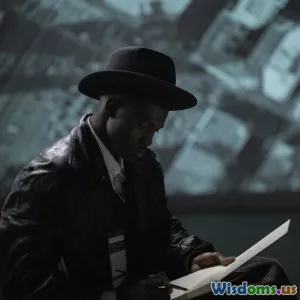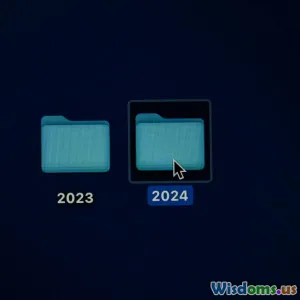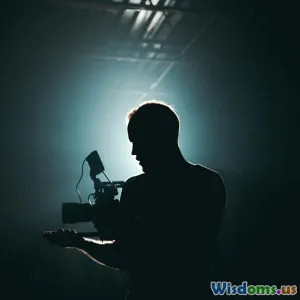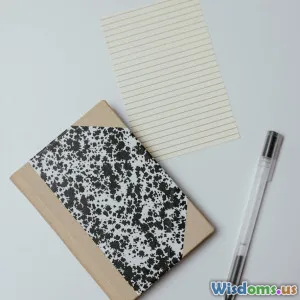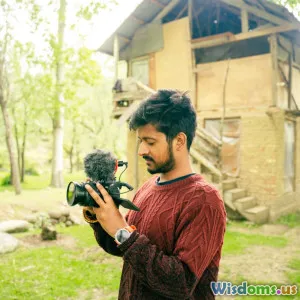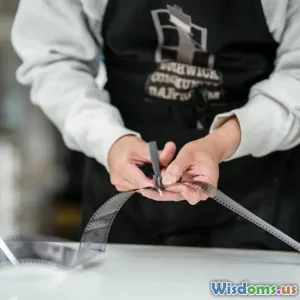
How to Create Compelling Short Films on a Budget
8 min read Master the art of creating captivating short films without breaking the bank with practical tips and creative strategies. (0 Reviews)
How to Create Compelling Short Films on a Budget
Short films have emerged as a powerful medium to tell impactful stories, showcase talent, and experiment creatively. Yet, one of the biggest misconceptions is that you need hundreds or thousands of dollars to create a captivating narrative on screen. The truth is, with smart planning, creativity, and resourcefulness, you can produce compelling short films without breaking the bank. This article delves into practical strategies for filmmakers looking to craft memorable short films on a tight budget.
The Magic of Storytelling: Prioritize Script Over Equipment
Before reaching for a high-end camera or sophisticated gear, start with the story. A resonant, well-written script will outshine expensive production values. Legendary films like Clerks by Kevin Smith, made on just $27,000, found success because they were rooted in authentic storytelling rather than lavish sets.
Tips for scripting on a budget:
- Write Simple, Impactful Stories: Limit locations, characters, and elaborate effects.
- Focus on Character Development: Emotional depth engages audiences despite technical limitations.
- Leverage Constraints as Creative Assets: Challenges often spark inventive storytelling — for example, confining the plot to one room or using a single prop.
Involving collaborators for script feedback can elevate your narrative without costing a dime. Platforms like ScriptCircle and online filmmaking forums offer free script critiques.
Smart Pre-Production Planning Saves Dollars and Time
Meticulous planning during pre-production can drastically reduce costs and post-production headaches.
- Location Scouting: Opt for free or low-cost locations such as friends’ homes, public parks, or community centers. Permits can be costly; always seek permission or filmer-friendly locations.
- Scheduling: Minimize shoot days. Each additional day increases expenses dramatically. Use tools like StudioBinder to organize shooting schedules efficiently.
- Casting: Tap into local acting communities, drama students, or social media groups. Emerging actors often seek roles for experience or exposure and may work for minimal compensation or deferred pay.
Example: For the short film Thunder Road (2016), director Jim Cummings shot in a few locations close to home with a skeleton crew yet garnered critical acclaim.
Utilizing Off-the-Shelf Gear and DIY Solutions
Equipment rental or ownership can be intimidating emotionally and financially. Fortunately, accessible alternatives exist:
- Camera: Modern smartphones capture high-definition footage rivaling many dedicated cameras. Devices like the iPhone 13 Pro or Samsung Galaxy S22 offer excellent image stabilization and 4K recording.
- Lenses: Clip-on lenses for phones or affordable manual lenses for mirrorless cameras expand creative options.
- Lighting: Natural light is your best friend. Shoot during “golden hour” for flattering light. For controlled lighting, DIY reflectors using foam boards, aluminum foil, and white sheets work wonders.
- Sound: Clear audio often makes or breaks a film. Use economical lavalier mics (e.g., Boya BY-M1) or consider repurposing wired headphones with a built-in mic. Recording sound separately with an app like Rode Reporter can improve quality.
Remember, the narrative drives engagement more than technical perfection.
Embrace Minimalism and Creative Composition
Compelling visuals need not rely on expensive gear:
- Composition Techniques: Use rule of thirds, leading lines, and framing to direct the audience’s focus.
- Camera Movement: Master affordable rigs like handheld shots or DIY stabilizers using household materials. Even tripod shots with slow zooms or pans elevate production value.
- Production Design: Utilize thrift shops or your environment to dress scenes. Consistency through color palettes or props cultivates mood effectively.
For instance, the short film Lights Out (2013), which later inspired a Hollywood adaptation, used minimal locations and a straightforward concept that capitalized on frighteningly simple lighting cues.
Post-Production: Free and Affordable Creativity Tools
Editing and sound design can polish low-budget films into festival-ready pieces.
- Editing Software: Lightworks, DaVinci Resolve (free version), and HitFilm Express are professional-grade free tools.
- Sound Design: Use royalty-free sound effects from sites like Freesound or ZapSplat to enrich your audio mix.
- Color Grading: Helps establish tone. DaVinci Resolve provides robust color grading capabilities without cost.
- Crowd Feedback: Screen rough cuts to friends or online communities to gain constructive input.
Pro tip: Allocate time wisely — great post-production can conceal many on-set limitations.
Leveraging Community and Crowdfunding
Your network is an invaluable asset:
- Collaborate: Filmmaking collectives or local film clubs often share equipment and locations.
- Crowdfunding: Platforms like Kickstarter and Indiegogo enable tailored funding by offering perks like digital downloads, personal thanks, or exclusive content.
- Barter Services: Exchange your skillset (e.g., photography, graphic design) for equipment, talent, or locations.
Example: The acclaimed short World of Tomorrow by Don Hertzfeldt relied heavily on crowdfunding and tight-knit community support to bring the project to life.
Inspiration from Real-World Budget Short Films
- Six Shooter (2004), directed by Martin McDonagh, was made with a modest budget but won an Academy Award for Best Live Action Short Film. Raw emotional performances and a focused narrative helped it stand out.
- Mama (2008), Guillermo del Toro-produced short that became a viral success, demonstrating how gripping storytelling coupled with clever use of practical effects and limited settings can create lasting impact.
These examples reinforce that constraints often cultivate distinctive voices rather than hinder creativity.
Conclusion: Resourcefulness Fuels Creativity
Creating compelling short films on a budget is less about having expensive equipment and more about maximizing the resources at your disposal. Prioritizing narrative strength, thoughtful planning, clever use of technology, and community support can make your filmmaking journey both affordable and artistically fulfilling. Remember, every iconic filmmaker started somewhere, often with very little.
Take inspiration from the successes achieved with minimal funds, embrace your creative challenges, and tell your story—your audience is waiting.
Ready to jump into your own short film project? Start today by writing a simple script and gathering friends who share your vision. Creativity thrives not in abundance, but in passion and perseverance.
Rate the Post
User Reviews
Popular Posts











